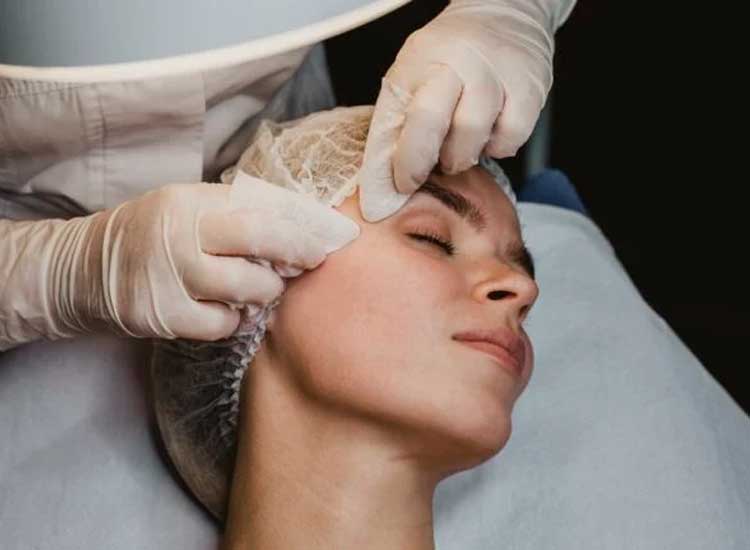Facial Thread Planting, Know the Procedure Stages and Risks – Facial thread lifts are claimed to make skin healthy and youthful . Apart from that, the recovery period for this procedure is also quite fast. If you are interested in undergoing this treatment, you need to know the stages of the thread implant procedure and consider the risks.
What is a facial thread lift procedure?
A thread lift is a facial treatment procedure performed by a doctor by inserting polypropylene threads into the layer of fat under the skin.
The thread is then pulled to lift loose skin and tissue on the face and neck, so that the facial structure looks firm.
In contrast to plastic surgery , this procedure does not require a lot of action. The thread planting process and recovery time also tend to be fast.
However, the threadlift effect does not last forever, it only provides temporary but long-lasting results.
A study in the journal Clinical, Cosmetic and Investigational Dermatology , tested 100 people who had thread lifts to see the long-term effects of the procedure.
The results showed that the effect of the thread implant procedure began to decrease in the first year because the sewing thread began to dissolve in the skin.
However, a skin rejuvenation effect appeared the following year. These effects lasted for 3 years.
The purpose of facial thread implantation
Basically, the purpose of thread lifts is to tighten facial skin and prevent skin aging .
Skin aging, such as wrinkles, generally occurs due to reduced collagen production with age.
Well, the thread lift procedure can help increase collagen production . This is because the body considers the thread as a foreign object and thinks that an injury has occurred.
As a result, the body will activate the wound healing mechanism by producing collagen.
Collagen helps strengthen the skin structure to support the underlying tissue, so the skin will look firm.
Facial thread implant procedure
Basically, the facial thread implant procedure is not much different from the nose thread implant procedure . Following are the steps.
1. Before the procedure
Before carrying out the thread implant procedure, the patient will first consult with the surgeon to discuss the stages of the procedure and the desired results.
Thread implant procedures generally do not use general anesthesia, but instead use local anesthesia in certain areas, so that the patient will not feel pain.
2. Thread planting process
The doctor will insert a special surgical thread into the skin layer using a thin needle. Then, the doctor will pull the facial skin, starting from the forehead, under the eyes, cheeks and neck.
The thread inserted into this layer of skin will pull the tissue and muscles under the skin, so that the skin will lift and look firmer. This procedure usually lasts one hour.
3. Recovery period after thread implantation
After the procedure is complete, the patient can usually go home immediately and does not require hospitalization.
This is because this procedure is carried out under local anesthesia, so there is no need to wait for the effects of the anesthetic to wear off like using general anesthesia.
Patients may experience symptoms of swelling or stiffness in the skin where the thread is implanted. This is quite normal and usually goes away within a few days.
Doctors will also usually prescribe antibiotics to prevent infection after the procedure.
Side effects of facial thread implants
Even though facial thread lifts can tighten the skin and overcome aging, this procedure can still cause side effects.
Following are some of the side effects that can be experienced after undergoing a facial thread implant procedure.
1. Swelling and pain
The most common side effects after a thread lift procedure are swelling and pain . However, usually these side effects only last temporarily and will disappear in 7 to 14 days.
Doctors will also usually recommend applying a cold compress to reduce swelling.
2. Folds or depressions in the thread planting area
In some people, this procedure may cause skin folds or depressions in the area of the skin where the thread is implanted.
Quoting the Aesthetic Plastic Surgery journal , patients over 50 years of age generally experience this side effect because facial skin begins to lose its elasticity.
3. Allergic reactions
Allergic reactions, such as redness, rash , or swelling of the skin area may also occur after undergoing this procedure.
Therefore, if allergic symptoms appear after carrying out the thread lift procedure, you should immediately consult a doctor.
4. Hematoma
This facial thread lift procedure can also cause hematoma or blood buildup.
Hematomas occur because the action of pulling the thread accidentally injures or damages the walls of blood vessels. However, cases of this side effect are quite rare.
5. Infection
Although rare, infections can occur after performing a thread lift procedure because bacteria enter when the needle is inserted under the skin layer.
Infection is a side effect that needs to be watched out for after carrying out the thread lift procedure . Therefore, immediately contact a doctor if symptoms of infection appear, such as:
- fever,
- swollen face for more than 48 hours, and
- headache that won’t go away.
Thread lift is a facial treatment method that has a fast recovery period because this procedure is carried out without general anesthesia.
Apart from that, keep in mind, a thread lift is not a procedure that can provide long-term results. This procedure is not permanent and patients will need to repeat the treatment for long-term results.
Link Terkait :
